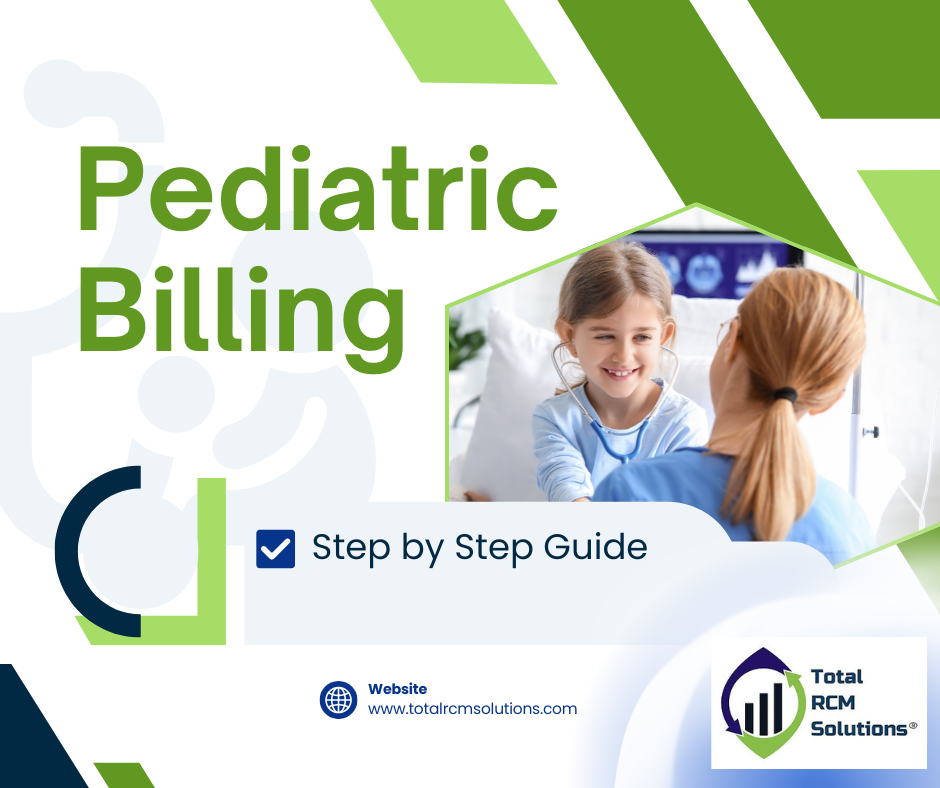Pediatric billing isn’t just a smaller version of adult billing—it’s a specialized workflow with its own set of codes, payer rules, and compliance risks. From well-child visits and immunizations to Medicaid nuances and newborn enrollment, pediatric revenue cycle management (RCM) requires precision at every step.
Here’s a step-by-step breakdown of how to manage pediatric billing accurately and efficiently in U.S. healthcare:
✅ 1. Accurate Intake & Insurance Verification
- Capture the child’s full demographics and guardian/guarantor details.
- Verify coverage for every visit—especially for newborns, who must be added to a policy within 30 days.
- Identify Medicaid/CHIP vs. commercial coverage and confirm coordination of benefits.
✅ 2. Code Visits by Age and Complexity
- Use age-specific CPT codes for preventive visits:
- 99381–99385 (new patients)
- 99391–99395 (established patients)
- Add modifier 25 if a separate sick visit occurs during a preventive exam.
- Bill screenings (e.g., developmental, vision, hearing) with appropriate add-on codes (e.g., 96110).
✅ 3. Immunization Billing: Two-Part Process
- Use the vaccine product code (e.g., 90707 for MMR) + administration code (90460/90461).
- Document parent counseling—required for 90460.
- Include NDC codes when billing Medicaid plans.
✅ 4. Understand Medicaid & VFC Billing Rules
- Each state has unique Medicaid limits on visits and vaccines—check before billing.
- For Vaccines for Children (VFC):
- Bill only for administration, not the vaccine product.
- Record eligibility and vaccine lot details.
✅ 5. Timely Charge Entry & Clean Claims
- Ensure charges are entered within 48 hours of service.
- Scrub claims for age-appropriateness, missing modifiers, and ICD/CPT mismatches.
- Submit clean claims electronically to minimize rework and delays.
✅ 6. Denial Prevention & Follow-U
- Common pediatric claim denials include:
- Vaccine coding errors
- Coordination of benefits issues
- Services billed outside coverage limits
- Set up a system for appeals and corrections with supporting documentation.
✅ 7. Handle Patient Statements Thoughtfully
- Pediatric billing often involves divorced parents, secondary insurance, or Medicaid lapses.
- Clarify responsibility and communicate balances clearly with guardians.
- Offer payment options when needed—especially for high deductibles or vaccine costs.
✅ 8. Stay Audit-Ready
- Conduct regular internal audits to review:
- Vaccine administration coding
- Modifier usage
- Preventive visit documentation
- Stay updated with AAP, CMS, and Medicaid bulletins for pediatric policy changes.
🩺 Conclusion
Pediatric billing is both an operational and compliance challenge—but with a structured workflow and well-trained staff, practices can minimize denials, improve reimbursement, and deliver excellent care without financial disruptions.
Need help training your staff or optimizing your pediatric RCM workflow? Let’s connect at contact@totalrcmsolutions.com
Pediatrics #RCM #MedicalBilling #HealthcareFinance #PracticeManagement #Medicaid #Vaccines #VFC #CPTCoding #MedicalCoders #Pediatricians #BillingTips

